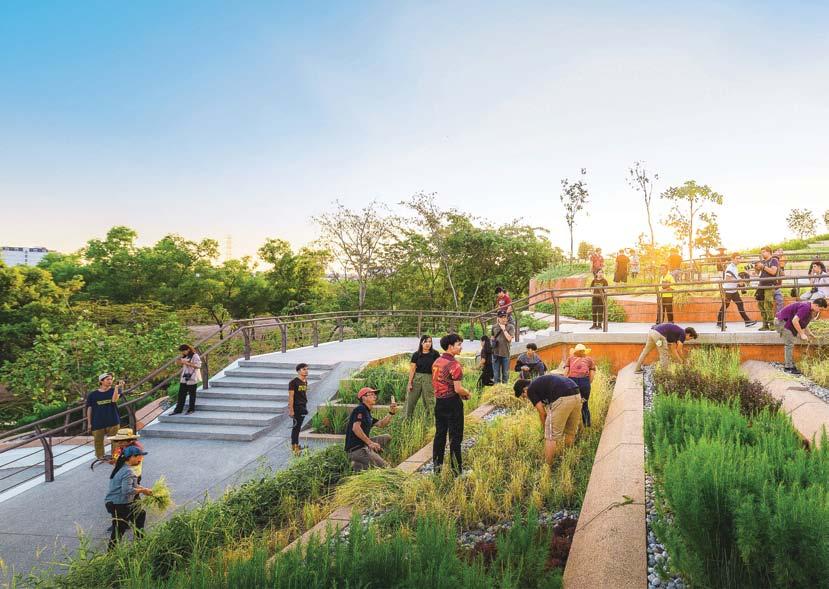
2 minute read
Feeding the Future
Feeding into theFuture
Asia’s largest Urban Rooftop Farm located in the Thai capital Bangkok is combining traditional landscape architecture with sustainable food production to feed an entire university
Advertisement
By: LANDPROCESS
Amidst the climate crisis, food and water scarcity pose tremendous threats to human civilization. Once abundant agrarian societies, Bangkok and cities across Southeast Asia, have fallen victim to unregulated urbanization. To prioritize global food security, and the health of our people and the environment, cities must utilize neglected spaces to efficiently and sustainably produce food. LANDPROCESS, a Bangkok-based landscape architecture and urban design firm joined forces with Thammasat University in Bangkok, to repurpose 236,806 sq. ft. of wasted rooftop space
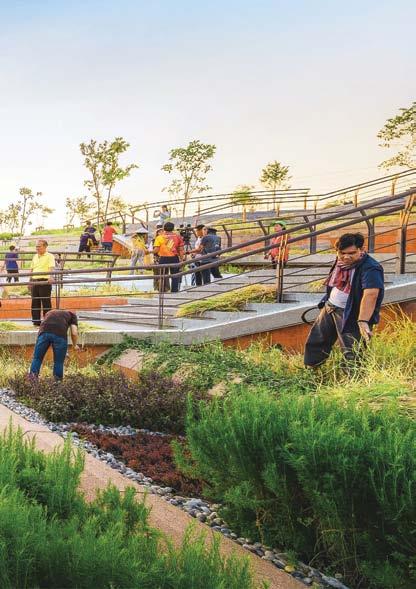
and turn it into Asia’s largest organic rooftop farm— known as Thammasat University Rooftop Farm or TURF.
Integrating landscape architecture with the ingenuity of traditional rice terraces, TURF incorporates sustainable food production, renewable energy, organic waste, water management and
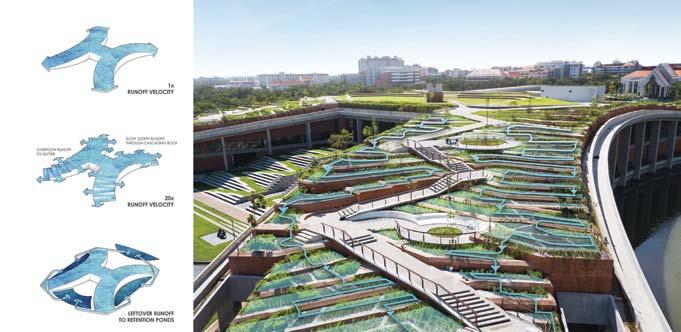

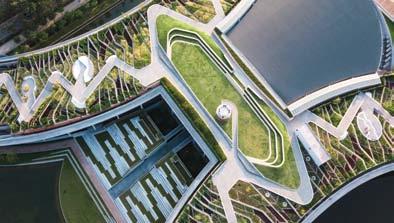
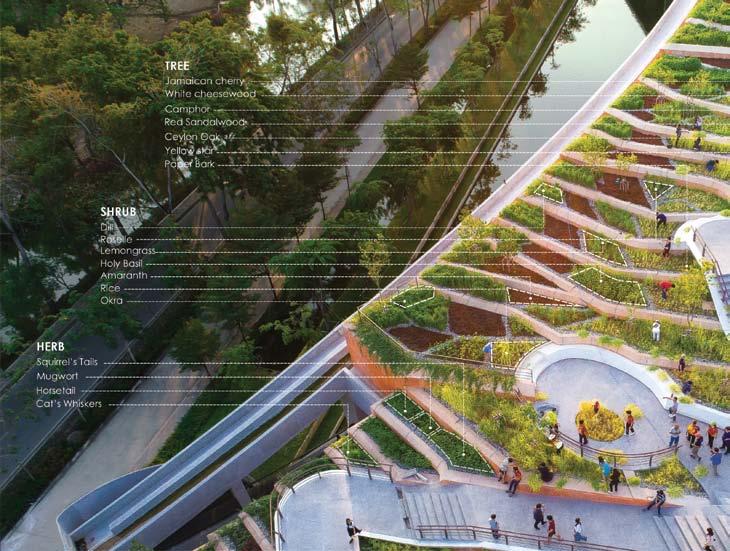
public space. The mound shape architecture pays respect to the university’s former director, Dr Puey Ungphakorn. “Puey” means “mound under the tree,” or “nourishment,” in Thai. With an earthwork of rice terraces and modern green roof technology, the cascading rooftop absorbs, filters

and slows down runoff 20 times more efficiently than conventional concrete rooftops.
As rainwater zigzags down the slopes, TURF grows food to feed the campus. At the end of its journey, four retention ponds await on each wing, mitigating and storing excessive rainfall for future

use during drought. Carving into the mountainous architecture, TURF maximizes the terrain to create multi-functional public spaces, and a large amphitheatre with a 360-degree panoramic view of Bangkok. The roof is equipped with solar panels, capable of producing up to 500,000 watts per hour to irrigate the urban farm and power the building beneath it.
As lush green turns to dry brown, TURF has a realistic, but hopeful solution, putting urban dwellers back in tune with agricultural practices. Lessons on Thai agriculture, landscape and native soil are embedded into TURF, educating future leaders to adapt and embrace climate challenges, by building sustainable cities for generations to come.
LANDPROCESS is helping to shift cities to a carbon neutral future and confronting the future climate uncertainty. Their mission is to defend and expand carbon-sequestering landscapes such as green roof, water-efficient design, urban farming, urban forests, wetlands, and grasslands, helping to drawdown atmospheric carbon dioxide and use of sustainable materials and construction practices. All of these efforts also enable communities to better adapt and improve their resilience. Credit to: v2com









